Photography courtesy of Lowell Washburn, all rights reserved.
CUSTER, SD–With symmetrically curved horns and sure footed agility, the Rocky Mountain bighorn is one of North America’s best known and most spectacular forms of wildlife. The closest populations of wild bighorns [to Iowa] exist among the higher elevations of South Dakota’s Black Hills National Forest and in the nearby Badlands National Park. Attempting to observe bighorn sheep in either setting represents one of my favorite outdoor pastimes. 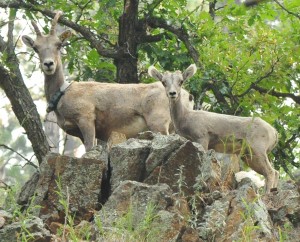
Even in the best of times, sheep viewing is no easy task. The species’ preference for exceedingly rugged terrain may allow a person to literally hike to within a hundred yards or less of wild bighorns yet never see one. But whenever you finally do receive an opportunity to observe the animal in its natural habitat, the outing quickly becomes a stellar event.
Not all viewing opportunities are created equal; and obtaining a memorable sighting doesn’t necessarily require the climbing skills of a Sherpa guide. There are those rare and exceptional occasions when sheep literally block the road and stop traffic. But don’t count on seeing that. More often, your only visual reward will be a quick, split second glimpse as a spooked sheep — “I think it was a bighorn” — vanishes over a rocky ridge top. The pendulum does swing, however. My all-time most cherished memory of bighorns occurred in September, 2004 when my wife Carol and I spent a full 2 ½ hours in the near presence of a remarkable bachelor group consisting of six full curl, mature rams. It was the kind of day you don’t easily forget.
Encounters like that don’t happen anymore. Decimated by a catastrophic 2005 outbreak of bacterial pneumonia, an estimated 80 to 90 percent of the Black Hills bighorn population perished in a single season. A decade later, a mere 30 sheep still exist in the 71,000 acre Custer State Park [the same place where we spent time with those six magnificent rams]; another 100 or so bighorns live in the Badlands. That’s the bad news. The good news is that a total of seven bighorn lambs were documented at Custer during 2014; the highest production count since the 2005 die off. This year, four lambs have been documented so far. Additional production is suspected from another known, but highly elusive, band of ewes living nearby. Although slowly climbing numbers provide hope for the future and suggest that bighorns are on a path to recovery, they remain listed as the region’s rarest species of big game.
While in the area last week, I spent parts of five mornings searching for Custer bighorns. I hit pay dirt on the third day; locating a pair of immature rams accompanied by two prime ewes. Best of all, one of the ewes was being shadowed by a frisky, nimble footed lamb.
Day four proved better yet when I discovered a group containing three ewes, two healthy lambs, and five young rams [including one handsome four-year-old] feeding along a steep slope near the trailhead of Custer Park’s Grace Coolidge Walk-In Area. In spite of the fact that I made too much noise while climbing toward the sheep, my ineptness was somewhat overlooked as the group continued to drift in and out of view for most of a half hour. Being able to observe ten wild Black Hills bighorns in one spot provided an exhilarating experience – and then some. Returning to the same ridge lines the following morning, I failed to locate a single sheep.
More Good News: Earlier this year, Black Hills bighorns received a substantial boost when South Dakota Game & Parks transplanted 26 wild sheep from Alberta, Canada to the northern hills’ Deadwood area. Attempts to establish the new herd was made possible by hunters who generated more than $180,000 during two special fund raising events. The sum far exceeded the actual $40,000 needed to cover relocation expenses, and a portion of the “excess funding” was used to fit 24 of the bighorns with GPS tracking devices. The state of the art trackers will aid personnel with South Dakota State University in monitoring the herd’s movements, future reproduction, habitat preferences, and survival.

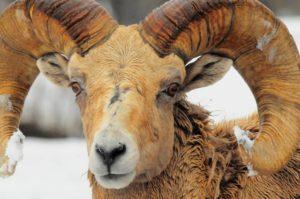
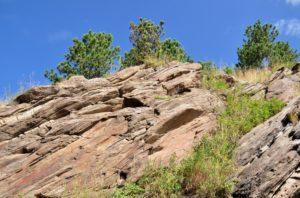
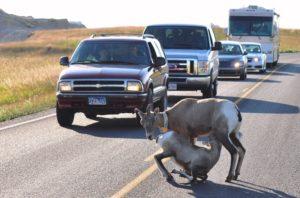
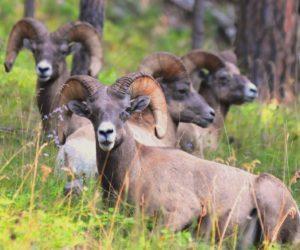
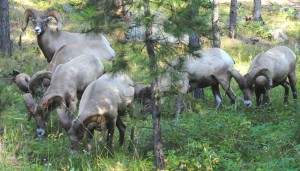
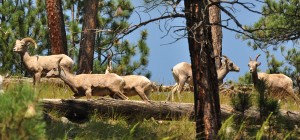
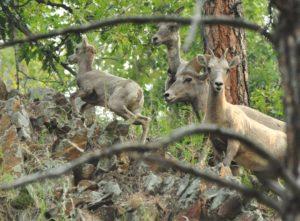

 Tom Cope
Tom Cope Sue Wilkinson
Sue Wilkinson Susan Judkins Josten
Susan Judkins Josten Rudi Roeslein
Rudi Roeslein Elyssa McFarland
Elyssa McFarland Mark Langgin
Mark Langgin Adam Janke
Adam Janke Joe Henry
Joe Henry Kristin Ashenbrenner
Kristin Ashenbrenner Joe Wilkinson
Joe Wilkinson Dr. Tammy Mildenstein
Dr. Tammy Mildenstein Sean McMahon
Sean McMahon